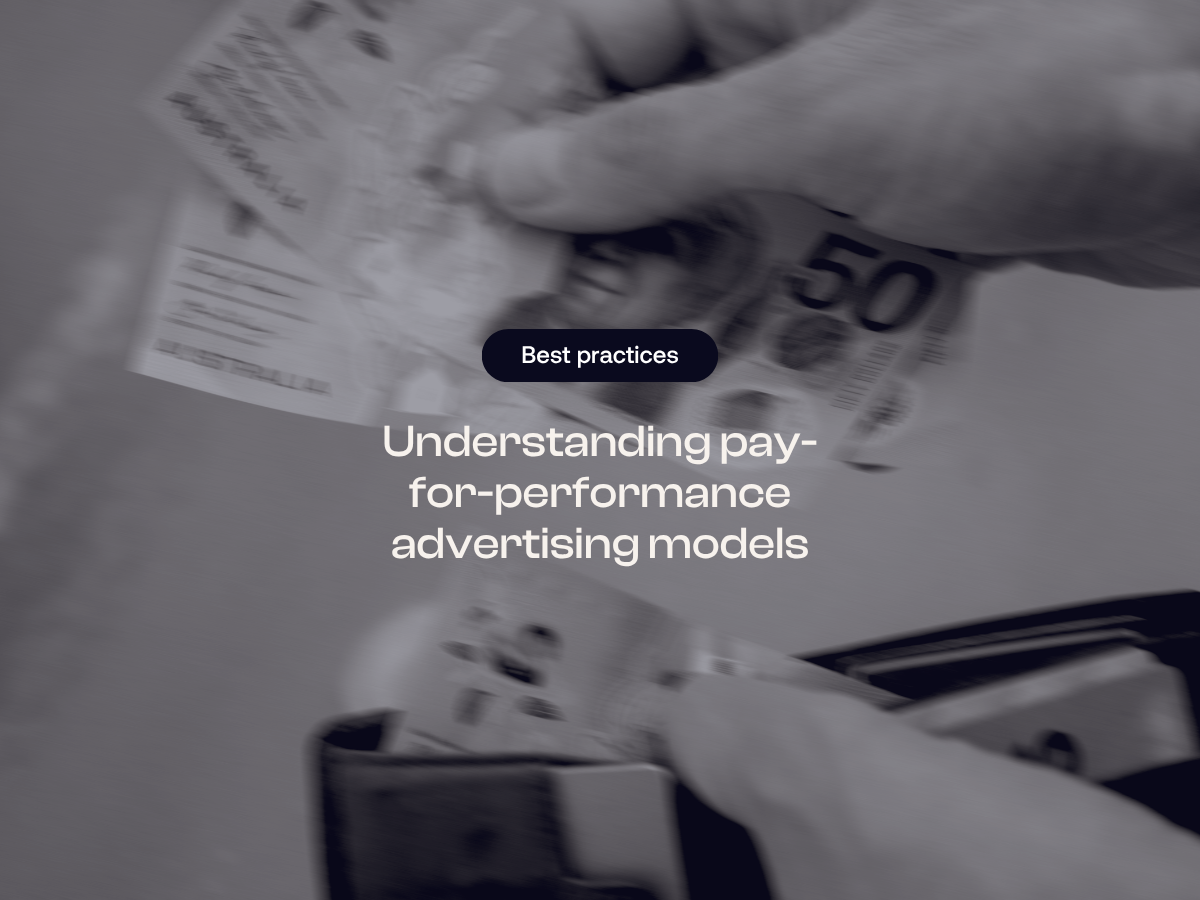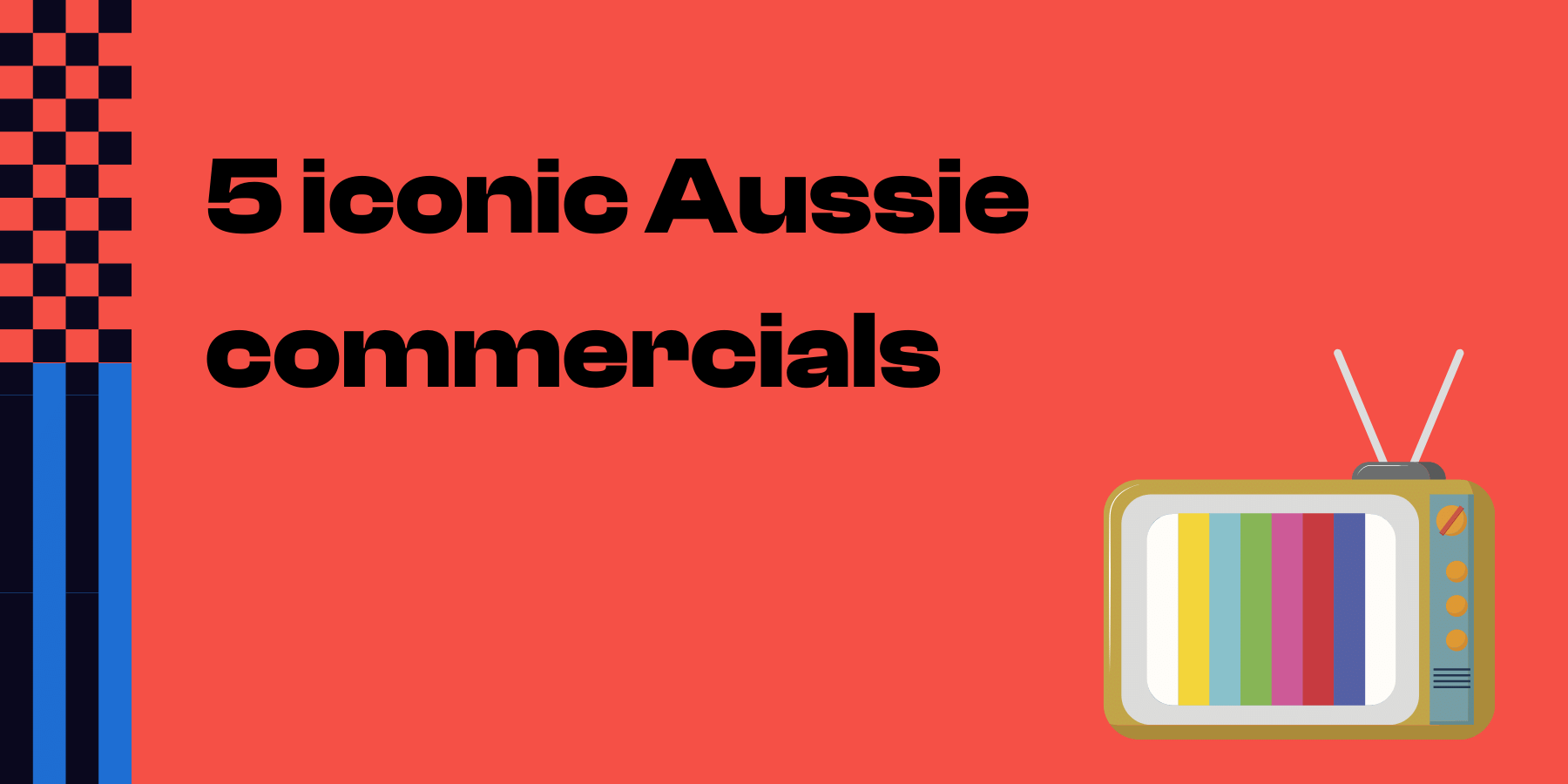A complete guide to pay-for-performance marketing

Last updated: 05 December 2025
If you've been researching digital marketing options, you may have come across the term "pay-for-performance advertising." But what exactly does it mean and how does it differ from traditional marketing agency relationships?
We're going to break down everything you need to know about pay-for-performance marketing and showcase examples of some of our work with Australian businesses.
What is pay-for-performance advertising?
Pay-for-performance advertising is a marketing model where you only pay when you get results. Instead of paying a fixed monthly fee regardless of outcomes, your costs are directly tied to the leads, sales or conversions your campaigns generate.
This model is also called performance-based marketing or results-based advertising. It changes the risk-reward relationship between businesses and their marketing agencies.
Here's the key difference:
- Traditional model: Pay a fixed monthly fee like A$3,000/month regardless of results
- Pay-for-performance model: Pay commission on results above agreed targets like 15% of revenue above baseline
How does pay-for-performance work?
The pay-for-performance process works like this:
1. Define success metrics
We work together to set baseline performance and growth targets. These are our key performance indicators (KPIs) moving forward. For e-commerce, this typically means:
- Current monthly revenue benchmarks
- Target growth percentages
- Return on Ad Spend (ROAS)
- Minimum performance thresholds
- Time frames for measuring sales
2. Set up tracking systems
We put advanced analytics and tracking systems in place. These accurately measure and connect results to specific campaigns. This allows us to measure your performance against actual business goals.
3. Launch and optimise ad campaigns
Your Google Ads, Meta (Facebook) ads or other marketing campaigns launch. We continuously optimise them to deliver your defined outcomes.
4. Pay for performance above baseline
You pay commission only on results that beat your agreed baseline targets. This creates a true partnership where we both benefit from growth.
Pay-for-performance advantages and disadvantages
Understanding both the benefits and drawbacks helps you make the right choice for your business.
Pay-per-performance advantages
The benefits of pay-for-performance advertising make this model attractive for many businesses:
1. Lower financial risk
The biggest advantage is less risk. If campaigns don't deliver results, you don't pay (beyond any initial setup costs).
2. Complete transparency
You know exactly what each lead or conversion costs. This removes guesswork about marketing ROI.
3. Agency accountability
Your marketing agency must deliver actual results, not just reports and activity. This creates a different working dynamic:
Traditional agency approach:
- Strategic focus on long-term brand building and market development
- Consistent service delivery with predictable monthly investment
- Comprehensive marketing support across multiple objectives
Pay-for-performance agency approach:
- Direct focus on revenue-generating activities
- Income tied to your business success
- Intensive optimisation when performance targets are within reach
- Naturally incentivised to find the most profitable opportunities
4. Predictable scaling
When campaigns work, you can increase budgets with confidence. Your cost-per-result stays consistent.
5. Better cash flow management
Instead of large upfront fees, you pay as results come in. This improves cash flow predictability.
Disadvantages for pay-for-performance advertising
1. Defining results can be complex
Deciding what makes a "qualified lead" requires careful thought. All parties need clear agreement. You need a clear CRM to track leads and compare qualified and disqualified leads. As a result, pay for performance ecommerce advertising often works better than lead generation.
2. Long sales cycles create challenges
For businesses with long sales cycles (6+ months), connecting marketing to final sales can be difficult.
3. Limited long-term strategy
Agencies might focus on quick wins rather than long-term brand building or market development.
4. Higher per-result costs
Individual leads or conversions may cost more than traditional retainer models. However, overall ROI often improves.
5. Not right for all businesses
Complex B2B sales processes or highly seasonal businesses may not work well with performance-based pricing.
Fee-for-service vs pay-for-performance: which is better?
The fee-for-service vs pay-for-performance debate comes down to your business needs:
Choose pay-for-performance if you:
- Want to reduce upfront marketing risk
- Have clear lead qualification criteria
- Prefer paying for measurable outcomes
- Need predictable cost-per-acquisition
- Want maximum agency accountability
Choose fee-for-service if you:
- Value ongoing strategic partnership
- Have complex, long sales cycles
- Need comprehensive brand development
- Prefer predictable monthly costs
- Want continuous optimisation regardless of short-term results
Google Ads pay-for-performance agency services
When looking for a Google Ads pay-for-performance agency, you'll find this model works particularly well because:
- Precise tracking: Google's tracking accurately connects results to specific campaigns
- Fast results: Search ads can generate sales quickly, making ROAS calculation easy
- Clear intent: People searching are more likely to buy
- Easy measurement: Revenue and return on ad spend are simple to track
Google pay-for-performance campaigns typically use a ROAS-based commission structure. You pay a base percentage plus performance bonuses as your return on investment improves.
Pay-for-performance Facebook ads
Pay-for-performance Facebook ads work well for:
- Lead generation campaigns: Using Meta's lead ad formats
- Online store conversions: Tracking actual sales and revenue
- Local business leads: Targeting specific areas
- Event registrations: Measuring sign-ups and attendance
Meta's detailed targeting and conversion tracking make it ideal for performance-based campaigns.
Pay-per-performance pricing models
Based on our experience with SLAM Strategy, here's how performance-based pricing typically works:
1. Flexible baseline structure
The minimum performance payment and starting commission percentage vary by client, depending on your current sales volume and profit margins. This ensures the model works for businesses of different sizes.
2. ROAS-based bonus tiers
Additional commission percentages are triggered by achieving specific ROAS targets with bonuses increasing as performance improves.
3. Zero management fees approach
Unlike traditional agencies that charge management fees on top of ad spend, our pay-for-performance model includes all management within the commission structure.
Pay-per-performance digital marketing agency selection
When choosing a pay-for-performance advertising agency, look for:
Proven track record
Ask for case studies showing actual results and ROI improvements for similar businesses.
Clear measurement systems
Make sure they have strong tracking and attribution systems in place.
Industry experience
Look for agencies with experience in your specific industry and target market.
Clear reporting
They should provide detailed, easy-to-understand reports. These should show exactly how results are achieved.
Realistic expectations
Be careful of agencies promising unrealistic results or guarantees that seem too good to be true.
A good pay-for-performance agency will be transparent about their methods and realistic about what they can achieve for your business.
Pay-per-performance e-commerce solutions
Pay-for-performance e-commerce campaigns are particularly effective because online sales are easy to track and measure. E-commerce businesses benefit from:
- Clear revenue attribution: Every sale can be traced back to specific ads
- Fast feedback loops: You can see results within days or weeks
- Scalable growth: Successful campaigns can quickly expand
- Seasonal flexibility: Pay more during peak seasons when results are higher
Applications of pay-per-performance
Since acquiring SLAM Strategy, we've implemented their proven pay-for-performance framework across various business types:
E-commerce retailers benefit from ROAS-based pricing where commission increases as advertising return improves, creating strong incentives for campaign optimisation.
Service-based businesses with clear lead qualification criteria can use performance pricing to pay only for leads that meet specific quality standards.
Growing businesses appreciate the reduced upfront risk, paying lower base fees and higher performance bonuses only when revenue targets are exceeded.
The key to success with any pay-for-performance model is having clear attribution tracking and agreed-upon success metrics that both parties understand and can measure accurately.
For example, established e-commerce retailers can generate A$6,000-$8,000+ in monthly commission revenue across Google and Meta platforms when campaigns perform well, demonstrating the mutual success potential of this model.
Is pay-per-performance right for your business?
Pay-for-performance advertising works best for businesses that:
- Have clear revenue attribution from advertising campaigns
- Want to minimise marketing risk while scaling
- Can track and measure results accurately
- Prefer outcome-based pricing over fixed retainers
It may not be suitable if:
- Your sales cycle exceeds 6 months
- Revenue attribution is complex or unclear
- You prefer predictable monthly costs
Getting started with pay-for-performance
If you're considering pay-for-performance advertising:
1. Define your ideal customer
Clearly outline what makes a lead "qualified" for your business.
2. Set realistic expectations
Work with your agency to set achievable targets and timelines.
3. Set up proper tracking
Make sure strong systems are in place to measure and connect results accurately.
4. Start with a pilot
Begin with a small test campaign to prove the model works before scaling.
5. Choose the right partner
Select an agency with proven experience in performance-based campaigns.
Why Refuel Creative offers pay-for-performance
At Refuel Creative, we've recently added pay-for-performance options after acquiring SLAM Strategy, a specialist performance marketing agency.
While our traditional retainer model continues to deliver excellent results for many clients, we recognised that some businesses prefer the accountability and risk reduction that pay-for-performance provides.
Our pay-for-performance services include:
- Google Ads pay-for-performance campaigns
- Meta (Facebook & Instagram) ads performance marketing
- Microsoft Advertising (Bing) with outcome-based pricing
- LinkedIn advertising campaigns
- Pinterest and TikTok advertising options
- Shopify-integrated ecommerce campaigns
Take the next step
Ready to explore whether pay-for-performance advertising could work for your business?
Book a free consultation where we'll:
- Review your current marketing performance
- Discuss both traditional and pay-for-performance options
- Show you exactly how performance-based pricing would work
- Provide a clear roadmap for better results
You can also check out our free pay-for-performance e-book to find out even more.
Whether you prefer a traditional agency relationship or a results-driven pay-for-performance model, we're here to deliver the outcomes that matter most to you business.







